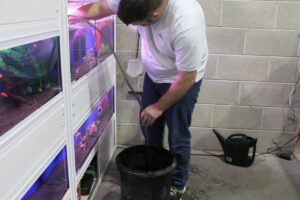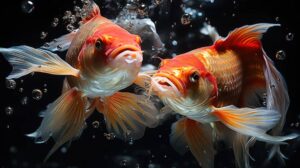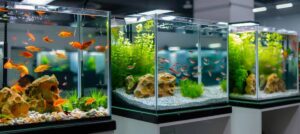The Pets Care Blog
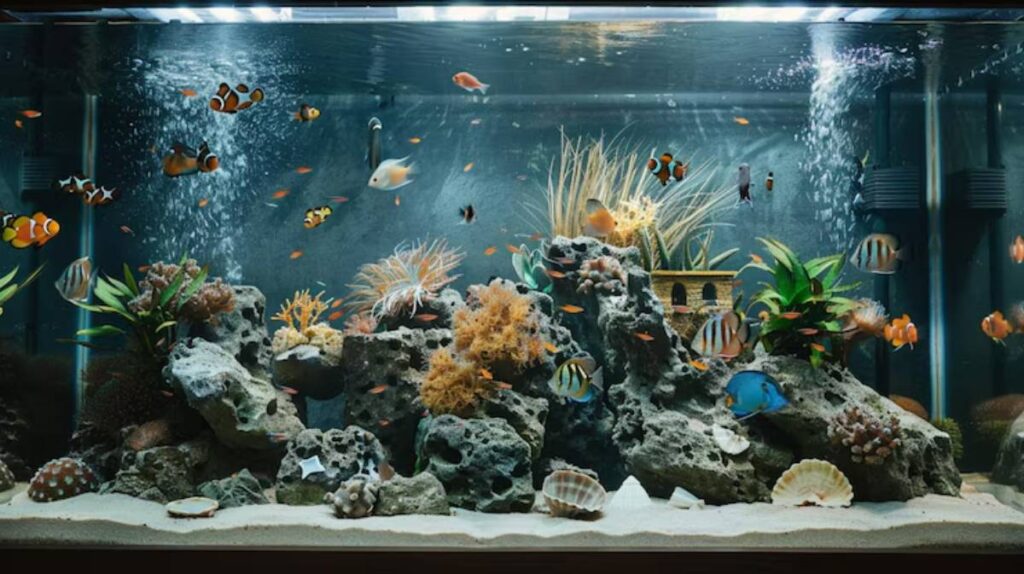
Substrate Choices and Their Impact on Your Aquarium
When setting up a new aquarium, it’s easy to get caught up in filters, fish, and lighting. But one critical decision lies underfoot — your substrate. Whether you choose gravel, sand, or soil, the type of substrate you lay down will directly influence your fish, water clarity, plant growth, and overall maintenance.
Think of substrate as the foundation of your tank. It’s not just there for looks — it plays a role in your tank’s filtration, nutrient cycling, and how comfortable your fish feel. For aquascapers, it’s also a vital design tool. And for plant lovers, it could be the difference between vibrant growth and sad, wilting stems.
This article explores aquarium gravel vs sand, different substrate types for fish tanks, and how to choose the best substrate for plants, ensuring your tank is not only beautiful but also biologically balanced and easy to care for.
Why Substrate Matters More Than You Think
Substrate isn’t just decorative. It serves multiple practical functions in a well-balanced aquarium.
- Supports beneficial bacteria, essential for biological filtration
- Anchors live plants, especially rooted species
- Influences water chemistry, particularly pH and hardness
- Affects fish behaviour, especially for bottom-dwellers
- Adds aesthetic depth, colour, and texture to your aquascape
Getting the substrate wrong can lead to messy water, poor plant growth, and unhappy fish. That’s why it’s worth taking a little time to understand your options.
Types of Substrate for Freshwater Aquariums
Let’s dive into the most common substrate choices and how they differ in function and feel.
1. Gravel
Gravel is a classic choice, especially for beginners. It comes in natural tones or colourful coatings and varies in grain size.
Pros:
- Easy to clean
- Great for water flow and oxygen around roots
- Suitable for undergravel filters
- Widely available
Cons:
- Coarse gravel may trap debris
- Not ideal for rooting fine plants
- Sharp-edged gravel can injure bottom-feeders
Gravel works well in community tanks and aquascapes where heavy planting isn’t the focus.
2. Sand
Sand gives aquariums a smooth, natural look — perfect for mimicking riverbeds or tropical habitats.
Pros:
- Ideal for bottom-dwelling fish (e.g., corydoras, loaches)
- Easy on sensitive barbels
- Looks clean and natural
- Prevents waste from sinking too deeply
Cons:
- Compacts over time, restricting plant roots
- May clog filters if stirred up
- Requires gentle cleaning with a siphon
Fine sand is excellent for minimalist setups, species-specific tanks, or fish that like to dig or sift.
3. Planting Substrate (Soil or Aqua Soil)
Designed for serious aquascapers, these nutrient-rich substrates feed plant roots and help plants flourish.
Pros:
- Promotes strong root systems
- Releases nutrients gradually
- Ideal for high-growth aquascapes
Cons:
- Can cloud water if disturbed
- Often needs a cap layer (like sand or gravel)
- Some types alter pH — monitor water chemistry
If your focus is on lush greenery, planting substrate is a smart long-term investment. It pairs well with low-maintenance aquarium plants if you want vibrant growth without daily effort.
4. Crushed Coral
This substrate isn’t suitable for all tanks, but it plays a niche role by increasing hardness and raising pH, perfect for African cichlids or marine setups.
Pros:
- Buffers pH
- Looks clean and natural
- Great for hard water species
Cons:
- Not plant-friendly
- Too abrasive for some fish
- Can significantly alter water chemistry
Only use crushed coral if your species require specific mineral levels. For typical community tanks, it’s best avoided.
Gravel vs Sand: Which Is Better?
This age-old question has no one-size-fits-all answer. It depends entirely on your fish, plants, and aesthetic goals.
Gravel Is Best When:
- You use an undergravel filter
- You want easy vacuuming and cleaning
- You keep rooted plants that prefer loose flow around roots
- You need a durable substrate that won’t compact
Sand Is Best When:
- You house bottom-dwellers like Corys or Kuhli loaches
- You want a soft, natural look
- You prefer minimal planting or floaters
- You’re building a biotope tank (e.g., Amazonian or Southeast Asian)
How Substrate Affects Plant Growth
Substrate has a direct influence on how well plants grow. Rooted plants — like swords, crypts, and stems — need anchoring and nutrients below the surface.
Substrate Impact on Plant Growth:
- Inert gravel/sand: Requires root tabs or liquid fertilisers
- Nutrient-rich soil: Supports long-term plant growth
- Depth matters: Use at least 5–7 cm depth for rooted plants
- Layering helps: Combine nutrient base with aesthetic top layer
Choosing the best substrate for plants means planning ahead. If you’re aiming for a low-tech tank, a simple gravel base with occasional root tabs might be enough. For high-growth aquascapes, aqua soil is worth the extra cost and effort.
Need help arranging your substrate and décor for optimal flow and fish safety? Explore arranging décor for fish safety and aesthetics to maximise function and beauty.
Matching Substrate to Your Fish
Some fish rely on substrate more than others. Species that forage, burrow, or sift through substrate can suffer if the base isn’t suitable.
Fish that Prefer Sand:
- Corydoras catfish
- Kuhli loaches
- Eartheaters (Geophagus species)
- Discus (gentle on fins)
Fish that Tolerate Gravel:
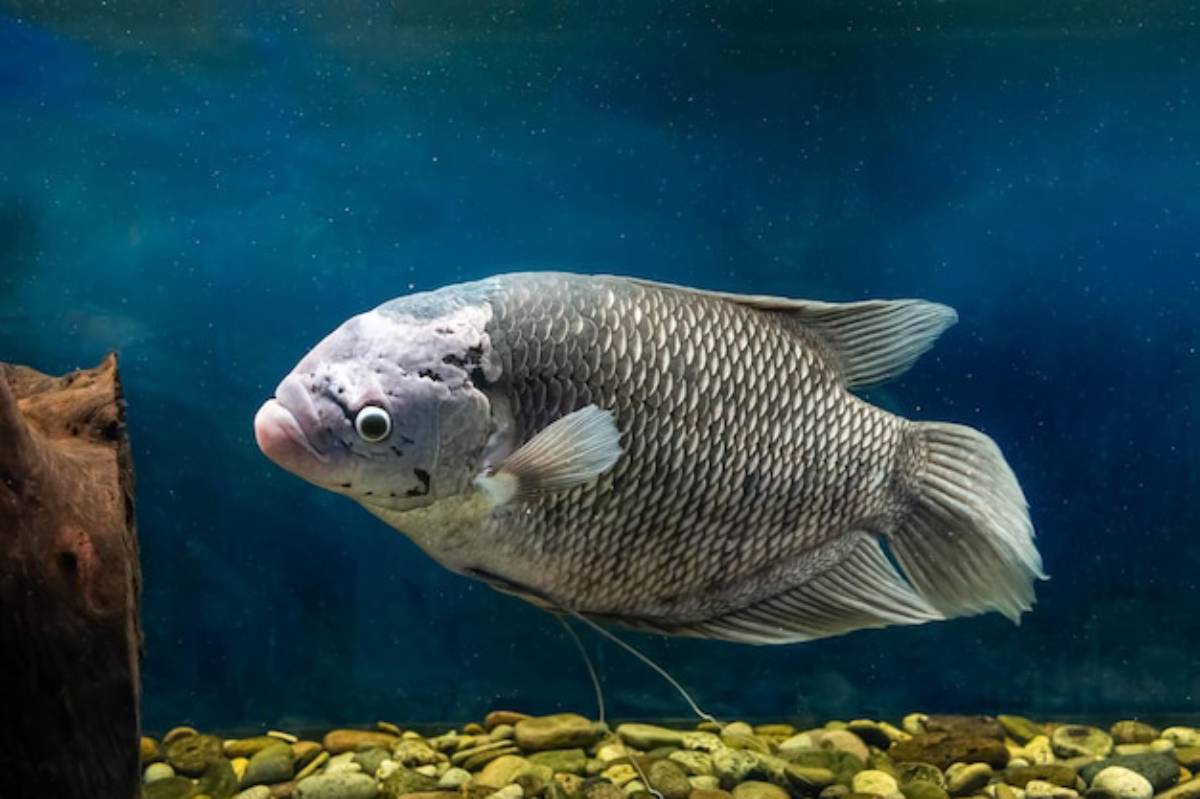
- Guppies, mollies, and platys
- Gouramis
- Tetras and rasboras
- Angelfish
Aggressive diggers like goldfish and certain cichlids often uproot plants and stir substrate — sand or larger gravel can help reduce mess, but plants should be anchored or float.
Substrate Depth and Layout Tips
Whatever material you choose, how you arrange it matters.
General Rules:
- Front of tank: 2–4 cm depth
- Back of tank: 5–8 cm depth
- Slope it: Higher at the back creates visual depth
- Avoid layering different substrates without proper separation
- Cap nutrient-rich bases to prevent clouding
If you plan to rearrange your layout often, stick with a stable, inert substrate. Soil-based tanks are better suited to permanent or slow-changing designs.
Maintenance Considerations by Substrate Type
Substrate doesn’t just sit there — it affects how easy your tank is to clean.
Gravel:
- Easy to vacuum
- Debris can settle between grains
- May need stirring in dead zones
Sand:
- Debris sits on top
- Use a hover technique when siphoning
- Prone to anaerobic pockets if not stirred
Planting Substrate:
- Avoid deep vacuuming
- Use gentle gravel vacs near roots
- Tidy with tweezers or a turkey baster
For all substrates, avoid overfeeding — leftover food contributes to waste build-up and algae.
Substrate Colour and Tank Aesthetics
Colour affects how your fish and plants appear.
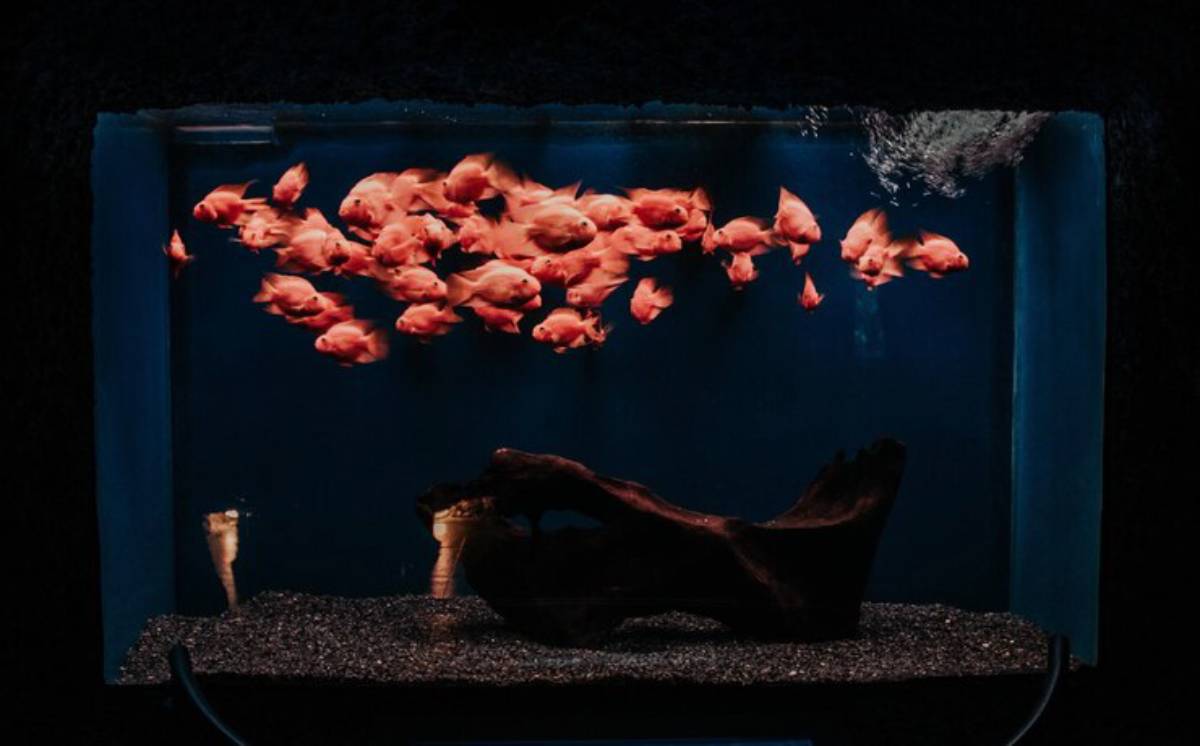
- Dark substrate: Enhances fish colour, hides waste
- Light substrate: Brightens tank, shows off plants
- Natural tones: Blend well with wood and stone décor
- Bold colours: Fun for kids’ tanks, but can stress fish over time
Also, think about how lighting reflects off your substrate — overly bright sand can cause glare or spook fish.
Conclusion: Build from the Bottom Up
Choosing the right substrate is one of the most foundational decisions you’ll make when setting up your aquarium. It shapes your aquascape, supports plant and fish health, and even determines how easy your tank will be to clean.
Whether you’re debating aquarium gravel vs sand, planning for dense plant growth, or simply looking to keep your bottom-dwellers happy, there’s a substrate type to suit your needs.
Start by asking yourself what your fish and plants need — then let your aesthetic vision follow. From smooth riverbed sands to textured gravel beds or nutrient-packed soils, the right substrate sets the stage for a thriving aquatic world.
Got a favourite substrate combo or a substrate horror story? Share it in the comments — your insight could help a fellow aquarist make a better choice!




